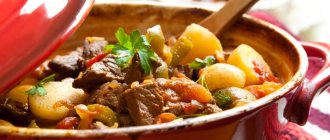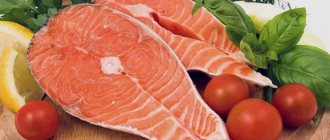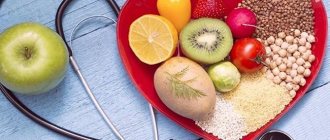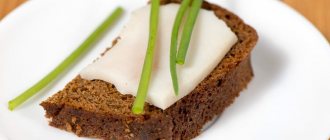Home — For the public
- Map of medical organizations
- Vaccination
- Clinical examination
- Fluorography
- Addresses and opening hours of clinics
- Emergency rooms
- Oncology
- Where to take an HIV test
- Healthy child's office
- Services
- Prevention of CVD
- Disease Prevention
- World Patient Safety Day
- Newspaper "Medical News"
- specialist
- School of Health
— Disease prevention
- HIV infection
- All about vaccination
- All about proper nutrition
- Hepatitis
- Flu
- Dementia
- Schoolchildren's health
- STD
- Tick-borne encephalitis
- Whooping cough
- Measles
- Legionellosis
- Meningococcal infection
- Oncology
- Acute intestinal infection
- Pediculosis
- First aid
- Pneumococcal infection
- Pneumonia
- Prevention of rabies
- Dependency Prevention
- Rotavirus infection
- Diabetes
- Cardiovascular diseases
- Injuries
- Tuberculosis
- Tularemia
- Physical activity
- Obstructive pulmonary disease
- Exotic infections
- Ecology
- Why is swimming in ponds dangerous?
- Cardiovascular diseases - Nutrition for arterial hypertension
Proper nutrition for hypertension - high blood pressure - must be balanced, otherwise arterial hypertension can take a crisis or malignant course. This can happen, for example, if you eat too much, especially when you eat a lot of salt and fatty foods.
Arterial hypertension (hypertension) is one of the most common diseases, the main symptom of which is an increase in blood pressure in the cardiovascular system. This occurs under the influence of negative external factors, such as constant stress, unfavorable environmental conditions and others.
The more serious development of arterial hypertension can also be facilitated by constant overeating, excessive salt intake, alcohol abuse, lack of exercise (physical inactivity), and smoking.
General nutritional guidelines for people with hypertension
Often, adjusting your diet is enough to bring your blood pressure back to normal.
With proper nutrition, the condition in some patients stabilizes to such an extent that the doctor can reduce the dose of prescribed medications.
In the diet of a patient with this pathology, the consumption of the following products is reduced or eliminated:
- Salt should not be consumed more than 6-8 g per day. With an excess of sodium chloride, the removal of fluid from the body is delayed, which increases the volume of blood in the vessels. Most foods contain salt, so they don't need to be salted. If the taste seems bland, season the dish with lemon juice, herbs, and mild spices.
- Strongly brewed tea (green, black), coffee, cocoa, drinks containing alcohol cause vascular spasm, as a result of which the heart works more intensely. In addition, they stimulate the nervous system. The possibility of consuming these products is determined in each individual case.
- Animal fats cause the body to produce cholesterol, which clogs blood vessels and limits blood flow to the heart and other internal organs.
- Easily digestible, or fast carbohydrates (sugars) cause obesity.
Foods with potassium to strengthen the heart muscle
Increase the content of the following foods in your diet:
- Plant origin (vegetables, fruits, cereals), since they are rich in dietary fiber (fiber), prevent the absorption of harmful cholesterol and reduce its amount in the blood. Fiber also makes you feel full and prevents overeating.
- Products with magnesium and potassium - minerals that strengthen the heart muscle and increase its endurance.
- Products with vitamin C, which strengthens the walls of blood vessels. To preserve ascorbic acid content as much as possible, reduce the heat treatment time of the product or consume it raw.
Magnesium-rich foods to strengthen your heart muscle
The role of diet in the fight against hypertension
When considering the effectiveness of dietary nutrition, it is necessary to take into account the starting data in each individual case. The transition to a healthy diet with an emphasis on lowering blood pressure is an important preventive measure for the risk group, which includes every second inhabitant of the planet.
The likelihood of developing hypertension increases with a sedentary lifestyle, excessive physical activity and stress, alcohol abuse, smoking, hereditary predisposition and age-related changes.
- Diet for knee arthritis. What foods are good and what are bad for arthrosis?
The beneficial effects of the diet must be supported by giving up bad habits, therapeutic exercises, breathing exercises, and walking.
High blood pressure can be of somatic origin and manifest itself as a symptom of diseases of the endocrine, digestive and cardiovascular systems.
When switching to restrictive diets and standard menus for hypertensive patients, it is necessary to take into account the specifics of concomitant diseases.
Dietary nutrition is not a basis for removing the diagnosis.
Reducing dosages, switching to gentle drugs or abandoning them is carried out by the attending physician on the basis of long-term observation.
What to exclude or limit?
Products that increase blood pressure
Patients with high blood pressure are prohibited or limited:
- eggs - fried or boiled until the yolk is firm;
- partially fish menu - fatty fish varieties (Caspian sprat, herring, mackerel, eel, halibut), caviar, as well as those prepared by smoking and canning;
- first courses - broths cooked from fish and meat, as well as mushrooms;
- vegetable preparations - salted and pickled;
- some vegetables and herbs - onions, spinach, rare, radishes, garlic;
- fatty meat - duck, goose, as well as liver, kidneys, other offal, smoked meats, canned goods;
- grape juice;
- flour - fresh, flaky, rich pastries;
- dairy products - fatty (above 40%) and salty types of cheese;
- animal and cooking fats;
- dishes with legumes and mushrooms.
Recipes
First meal
Vegetarian dumpling soup
Vegetable broth, potatoes, flour, 2 chicken eggs, milk, butter, garden herbs.
Prepare vegetable broth, add potatoes. Beat an egg into well-melted butter, add milk, beat, add flour until the dough has a viscous consistency. Take the resulting mass with a teaspoon and lower it into the boiling broth, forming dumplings, boil for 5-7 minutes. Sprinkle with garden herbs before serving.
Second courses
Chicken cutlets
Chicken white/brown meat, white bread, onion, 2 eggs, milk, vegetable oil, flour.
Prepare minced chicken, add egg, bread soaked in milk, onion, chopped herbs. Knead the resulting mass, form into cutlets, roll in flour and bake in the oven until cooked.
Dessert
Rice and carrot pudding
Egg, carrots, rice, butter, breadcrumbs, baking powder, yogurt.
Prepare rice. Grate the carrots, simmer, add rice, rub thoroughly through a sieve. Beat the egg into the resulting mass, add baking powder, breadcrumbs, and melted butter. Stir, place in a baking dish, bake for 40 minutes. Drizzle yoghurt on top.
General nutrition rules
Diet for hypertension is an important factor in stabilizing high blood pressure and improving the cardiovascular system. The basis of the diet is table No. 10 according to Pevzner and its variations:
- Nutrition for arthritis of the joints - what can you eat and what can you not?
- 10A – hypertension, accompanied by insufficient blood circulation and cardiac diseases. The goal is to relieve the cardiovascular system as much as possible.
- 10C – recommended for patients suffering from high blood pressure, atherosclerosis, ischemic heart disease, atherosclerotic cardiosclerosis. The goal is to slow down the formation of cholesterol plaques and improve metabolism.
- 10G – stage II-III hypertension. The goal is to stabilize blood pressure to the age norm.
In the initial stages of hypertension, if the patient has no other chronic diseases, diet No. 15 may be prescribed. Characterized by only limited salt intake, up to 5 g/day.
Basic principles of basic therapeutic nutrition for hypertension:
- The daily calorie intake is 2300-2500 kcal/day. Protein/fat/carbohydrate content – 70-90g/70-80g/300-400g.
- For hypertensive patients who are obese, caloric intake is reduced to 2100 kcal/day. The energy value of the diet is reduced by reducing fats - up to 60 g, carbohydrates - up to 250 g, eliminating sugar, starch, confectionery, and sweets based on them.
- Limiting table salt to 2-5 g/day is a prerequisite for any diet for heart disease and hypertension. Only ready-made dishes are seasoned. It is important to avoid excess sodium chloride intake from diet. To do this, it is enough to remove canned food, pickles, marinades, smoked meats, cheeses, and sausages from the menu. If it is difficult to give up salt, it can be replaced with potassium-magnesium chlorides, medicinal salt with a reduced sodium content.
- It is necessary to limit foods containing saturated fats and consume more foods rich in polyunsaturated fatty acids. PNSF are needed for the synthesis of prostaglandins. These substances have a hypotensive effect, improve blood vessels and blood.
- An important part of proper nutrition for heart disease and hypertension is the drinking regime. Every day you need to drink 1.2-1.5 liters of water. Lack of fluid constricts blood vessels, which causes pressure to rise. If arterial hypertension is accompanied by chronic heart failure, edema, the daily volume of water is reduced to 0.8-1 l/day, salt is completely excluded. More foods that cause a diuretic effect are introduced into the diet: dried apricots, grapes, apricots, parsley, rose hips.
The diet for cardiovascular diseases and high blood pressure is fractional - 5-6 times a day, in small portions, without overeating. Vegetables, meat, fish are boiled, steamed or baked. Frying and deep-fried dishes are excluded.
Authorized Products
The diet for hypertension includes the following in the diet:
- Wheat/rye, whole grain and with added bran bread. It is allowed to eat unpalatable homemade baked goods with added bran and dry biscuits.
- Vegetarian soups with vegetables and well-cooked cereals, with the addition of garden herbs without frying.
- Low-fat varieties of red meat, boiled/baked. And poultry meat, rabbit. In any form of cooking, meat must first be boiled, the broth drained, and cooked in a new portion of water.
- Dishes from sea/river fish and seafood.
- Various seasonal vegetables fresh (potatoes, cabbage, carrots, beets, zucchini, pumpkin, eggplant) or in the form of vegetable stew. Appetizers include seaweed, vinaigrettes seasoned with vegetable oil.
- Fermented milk products with reduced fat content and low-fat cottage cheese, sour cream (only in dishes).
- Soft-boiled chicken eggs - up to 3 pieces per week, milk and tomato sauces with vegetable broth or with the addition of sour cream.
- Cereals (barley, millet, buckwheat) and pasta in the form of porridges, casseroles with vegetables/cottage cheese.
- Butter/vegetable oils for cooking and ready-made dishes.
- Fruits/berries in any form, as well as in compotes, jelly and jellies.
- Drinks include coffee drinks (coffee substitutes), rosehip infusion, weak tea with milk, vegetable/berry juices.
Table of permitted products
| Proteins, g | Fats, g | Carbohydrates, g | Calories, kcal | |
Vegetables and greens | ||||
| greenery | 2,6 | 0,4 | 5,2 | 36 |
| eggplant | 1,2 | 0,1 | 4,5 | 24 |
| zucchini | 0,6 | 0,3 | 4,6 | 24 |
| cabbage | 1,8 | 0,1 | 4,7 | 27 |
| broccoli | 3,0 | 0,4 | 5,2 | 28 |
| boiled cauliflower | 1,8 | 0,3 | 4,0 | 29 |
| bulb onions | 1,4 | 0,0 | 10,4 | 41 |
| carrot | 1,3 | 0,1 | 6,9 | 32 |
| cucumbers | 0,8 | 0,1 | 2,8 | 15 |
| salad pepper | 1,3 | 0,0 | 5,3 | 27 |
| salad | 1,2 | 0,3 | 1,3 | 12 |
| beet | 1,5 | 0,1 | 8,8 | 40 |
| celery | 0,9 | 0,1 | 2,1 | 12 |
| asparagus | 1,9 | 0,1 | 3,1 | 20 |
| tomatoes | 0,6 | 0,2 | 4,2 | 20 |
| Jerusalem artichoke | 2,1 | 0,1 | 12,8 | 61 |
| pumpkin | 1,3 | 0,3 | 7,7 | 28 |
| lentils | 24,0 | 1,5 | 42,7 | 284 |
Fruits | ||||
| avocado | 2,0 | 20,0 | 7,4 | 208 |
| oranges | 0,9 | 0,2 | 8,1 | 36 |
| pomegranate | 0,9 | 0,0 | 13,9 | 52 |
| grapefruit | 0,7 | 0,2 | 6,5 | 29 |
| pears | 0,4 | 0,3 | 10,9 | 42 |
| kiwi | 1,0 | 0,6 | 10,3 | 48 |
| lemons | 0,9 | 0,1 | 3,0 | 16 |
| mango | 0,5 | 0,3 | 11,5 | 67 |
| tangerines | 0,8 | 0,2 | 7,5 | 33 |
| nectarine | 0,9 | 0,2 | 11,8 | 48 |
| peaches | 0,9 | 0,1 | 11,3 | 46 |
| apples | 0,4 | 0,4 | 9,8 | 47 |
Berries | ||||
| gooseberry | 0,7 | 0,2 | 12,0 | 43 |
| Red currants | 0,6 | 0,2 | 7,7 | 43 |
| black currant | 1,0 | 0,4 | 7,3 | 44 |
Nuts and dried fruits | ||||
| nuts | 15,0 | 40,0 | 20,0 | 500 |
| cashew | 25,7 | 54,1 | 13,2 | 643 |
| sesame | 19,4 | 48,7 | 12,2 | 565 |
| flax seeds | 18,3 | 42,2 | 28,9 | 534 |
| fenugreek seeds | 23,0 | 6,4 | 58,3 | 323 |
| sunflower seeds | 20,7 | 52,9 | 3,4 | 578 |
Cereals and porridges | ||||
| buckwheat (kernel) | 12,6 | 3,3 | 62,1 | 313 |
| oat groats | 12,3 | 6,1 | 59,5 | 342 |
| cereals | 11,9 | 7,2 | 69,3 | 366 |
| millet cereal | 11,5 | 3,3 | 69,3 | 348 |
| barley grits | 10,4 | 1,3 | 66,3 | 324 |
Bakery products | ||||
| Rye bread | 6,6 | 1,2 | 34,2 | 165 |
Raw materials and seasonings | ||||
| honey | 0,8 | 0,0 | 81,5 | 329 |
Dairy | ||||
| skim milk | 2,0 | 0,1 | 4,8 | 31 |
| natural yogurt 2% | 4,3 | 2,0 | 6,2 | 60 |
Cheeses and cottage cheese | ||||
| cottage cheese 0.6% (low fat) | 18,0 | 0,6 | 1,8 | 88 |
| curd tofu | 8,1 | 4,2 | 0,6 | 73 |
Meat products | ||||
| beef | 18,9 | 19,4 | 0,0 | 187 |
| rabbit | 21,0 | 8,0 | 0,0 | 156 |
Sausages | ||||
| boiled diet sausage | 12,1 | 13,5 | 0,0 | 170 |
Bird | ||||
| chicken fillet | 23,1 | 1,2 | 0,0 | 110 |
| turkey | 19,2 | 0,7 | 0,0 | 84 |
Fish and seafood | ||||
| fish | 18,5 | 4,9 | 0,0 | 136 |
| squid | 21,2 | 2,8 | 2,0 | 122 |
| mussels | 9,1 | 1,5 | 0,0 | 50 |
| seaweed | 0,8 | 5,1 | 0,0 | 49 |
Oils and fats | ||||
| butter | 0,5 | 82,5 | 0,8 | 748 |
| linseed oil | 0,0 | 99,8 | 0,0 | 898 |
| olive oil | 0,0 | 99,8 | 0,0 | 898 |
| sunflower oil | 0,0 | 99,9 | 0,0 | 899 |
Non-alcoholic drinks | ||||
| mineral water | 0,0 | 0,0 | 0,0 | — |
| green tea | 0,0 | 0,0 | 0,0 | — |
| * data is per 100 g of product | ||||
What should weight loss be like?
People suffering from high blood pressure should lose weight gradually - if they are overweight, lose up to 10 kg per month. Thus, methods that lead to sudden weight loss are prohibited, which is due to two factors:
- strict dietary restrictions and sudden weight loss are a great stress for the body, which will cause an exacerbation of hypertension;
- When losing weight, not only fat, but also a large amount of vital substances - proteins, vitamins and minerals - rapidly leaves the body, which causes complications in the course of the disease.
So, you need to lose weight gradually and through techniques that help lower blood pressure and awaken the following processes in the body:
- remove excess fluid and reduce pressure on blood vessels;
- reduce cholesterol levels and improve blood composition;
- strengthen blood vessels and reduce the risk of spasms;
- help thin thick blood;
- minimize the load on the cardiovascular system.
To achieve your goals and get rid of excess weight, you need to choose the right nutrition and training system.
Comments from nutritionists
Many patients with hypertension are interested in the question of whether it is possible to practice fasting to lose weight. No, high blood pressure and fasting are incompatible, and the recommendations of some authors on the Internet offering fasting treatment and positive reviews about such methods of treating hypertension can only harm your health. Moreover, not only hunger, but any strict diet is contraindicated for hypertensive patients. With a persistent increase in blood pressure, during a hypertensive crisis, two-day fasting diets are advisable: vegetable, cottage cheese, dairy, apple, rice-compote, dried fruit.









